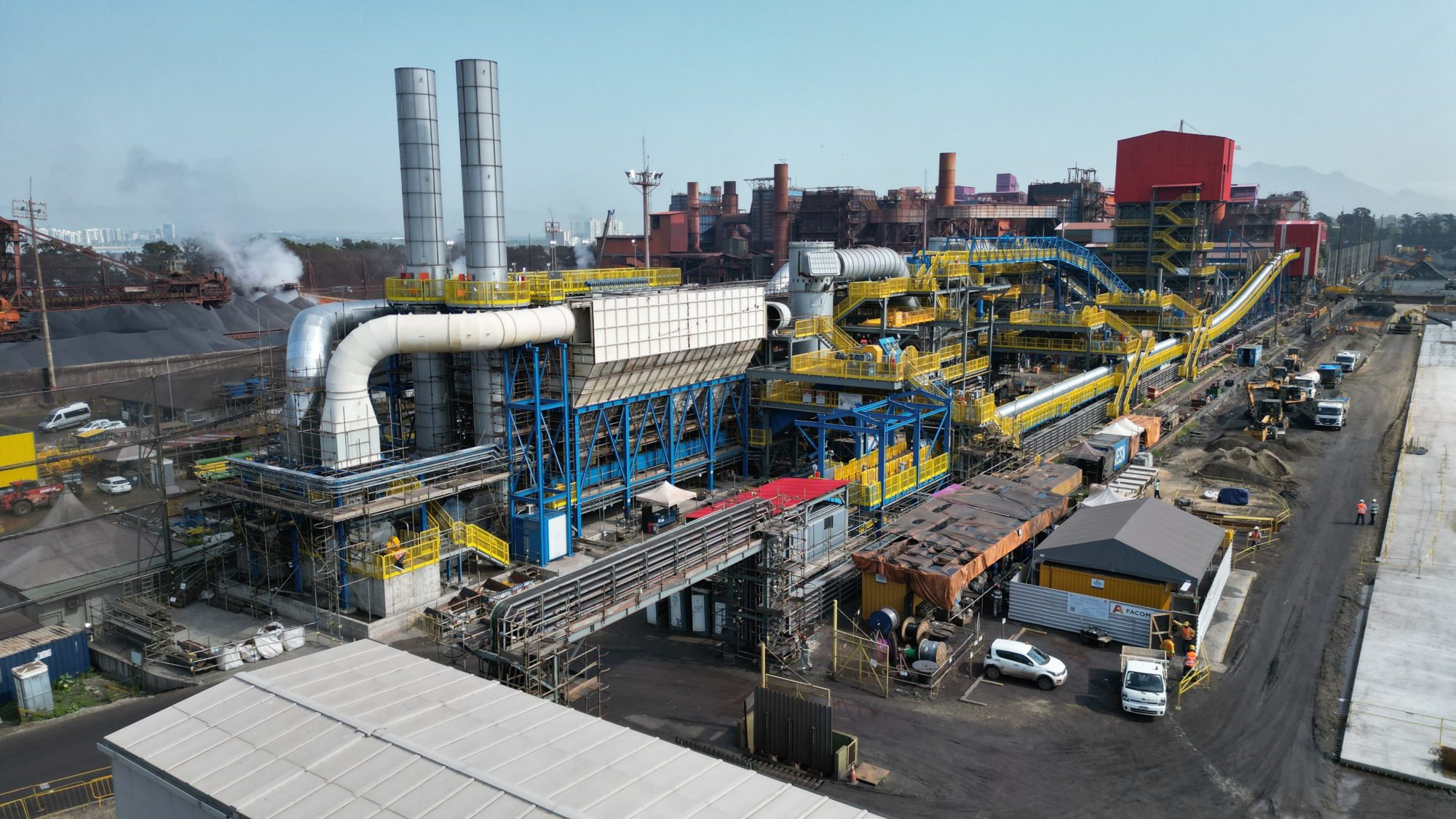Vale has started load tests of its iron ore briquette plants at the Tubarão Unit in Vitória, Brazil, as part of a project it believes could eventually reduce steel industry CO2 emissions by up to 10%.
The load tests are part of the plant’s commissioning and are one of the last stages before production begins, it said.
Vale’s CEO, Eduardo Bartolomeo, said: “This is a historic moment for the steel industry. After several years of development in Brazil, we are offering an innovative product that will support our clients in the challenge of decarbonising their operations and we are meeting demands from society to fight climate change.”
The briquette is produced from the low-temperature agglomeration of high-quality iron ore using a binder technology solution, which gives the final product high mechanical strength.
Announced by Vale in 2021, the briquette has the capacity to reduce greenhouse gas emissions in steel production by up to 10% compared with the traditional blast furnace process by eliminating the carbon-intensive sintering stage. This reduction is significant when considering that the steel industry is responsible for around 8% of the world’s emissions.
The product also reduces the emission of particulates and gases such as sulphur dioxide and nitrogen oxide, as well as eliminating the use of water in its production. The briquette can also be used in the direct reduction route, replacing the pellet.
The first briquette plant in Tubarão (pictured, photo: Rafael Coelho) is scheduled to start up this year and the second plant at the beginning of 2024. They will have the capacity to produce 6 Mt/y of briquette. The two units were originally dedicated to the production of pellets and were converted for briquettes. Investment in the project amounted to $256 million and generated 2,300 jobs during construction.
Vale began developing briquettes around 20 years ago at the Ferrous Technological Center in Nova Lima (Minas Gerais). It is part of the evolution of iron ore products offered by the company throughout its history, the result of significant investments in research and innovation. Until the 1960s, the basic product was high-iron lump. As the supply of lump fell, the first pelletising plants were set up in Brazil, which allowed the use of fine ore (pellet feed) and continue to be important for the steelmaking chain. The briquette, as well as pellets, are part of Vale’s portfolio of high-quality products. The company expects to expand its production capacity to 100 Mt/y of briquettes and pellets after 2030.
The briquette is also included in Vale’s strategy to reduce its Scope 3 emissions, related to the value chain, by 15% by 2035.
The company also aims to reduce its net direct and indirect carbon emissions (Scope 1 and 2) by 33% by 2030, as a first step towards becoming a zero-carbon company by 2050. Vale has already signed more than 50 agreements with clients to offer decarbonisation solutions, which account for 35% of the company’s Scope 3 emissions. Among the proposed solutions is the construction of briquette plants co-located on the premises of some customers.
Among the agreements signed, three aim to set up “Mega Hubs” in Middle Eastern countries (Saudi Arabia, the UAE and Oman) to produce “hot-briquetted iron” (HBI), in order to supply the local and transoceanic markets, with a significant reduction in CO2 emissions. It is expected Vale will build and operate iron ore concentration and briquetting plants at the hubs, supplying the raw material for the HBI plants, which will be built and operated by investors and/or clients. Vale is also studying the creation of similar hubs in Brazil, though no location has yet been defined.











